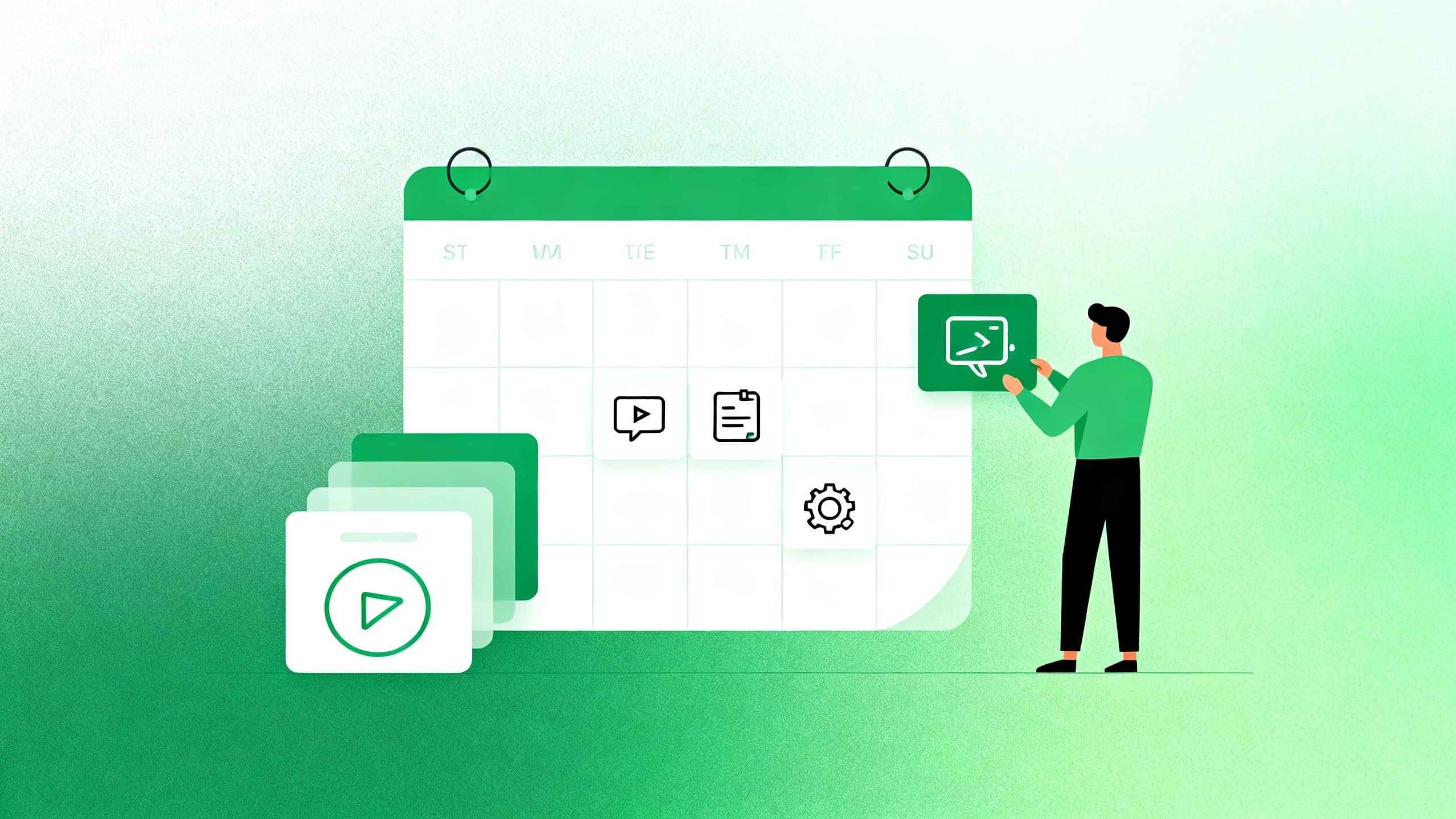Clippie AI vs Traditional Video Editing: Why Manual Editing Is Dead
Discover why AI editing tools like Clippie are replacing traditional video editing. Learn how automation, TikTok optimization, and scalability are reshaping content creation in 2025.

Addressing the Main Topic
The world of content creation has shifted faster than anyone predicted. In 2025, video editing is no longer about complex timelines, manual cuts, or expensive editing suites. The rise of AI-powered tools like Clippie AI has redefined how creators, brands, and marketers approach content. Traditional video editing, once a time-consuming art form, has become obsolete for fast-paced short-form platforms like TikTok, YouTube Shorts, and Instagram Reels. Instead, creators now focus on strategy and storytelling while AI handles the technical execution. The question isn’t if AI will replace manual editing, it already has.
Why This Topic Is Relevant Today
AI video creation has become one of the fastest-growing trends in the digital economy. As platforms like TikTok and YouTube continue to reward consistency and creativity, creators are realizing that speed is the new skill. The traditional workflow of recording, cutting, color grading, and rendering no longer aligns with the volume and frequency required to stay visible. Meanwhile, AI editing tools like Clippie AI automate the entire process, from script to final video, allowing creators to produce dozens of high-quality, faceless videos daily. In a creator economy that rewards momentum and quantity, manual editing simply can’t compete.
Defining the Topic Clearly
At its core, traditional video editing involves manually importing footage, selecting cuts, layering audio, syncing captions, and applying effects. This process can take hours or even days per video. AI editing, on the other hand, uses machine learning and automation to handle all these steps instantly. Tools like Clippie AI take a script, generate visuals, add subtitles, choose trending background music, and automatically format the video for platforms like TikTok or YouTube. What once required an editor and a studio now takes minutes, all through a browser.
Overview Paragraph Summarizing the Full Blog
This blog explores why AI-driven tools like Clippie AI are replacing traditional editing workflows. We’ll examine how automation is saving creators hundreds of hours, how Clippie’s smart templates outperform editing suites, and why TikTok’s short-form environment favors AI editing. You’ll also discover how this shift impacts monetization and what the future of video creation looks like as AI continues to evolve. Whether you’re a full-time creator, digital marketer, or small business owner, this blog will help you understand why manual editing is no longer efficient, scalable, or necessary in 2025.
Table of Contents
Time Cost of Manual Editing
AI Automation
Editing Suites vs Clippie
TikTok/Shorts Optimization
Future of Editing
FAQ
Conclusion
1. Time Cost of Manual Editing
Traditional editing is a time sink. A simple 30-second video can take hours, importing clips, syncing music, color correcting, and rendering for multiple formats. For creators aiming to post daily, this process quickly becomes impossible to sustain. Even professional editors struggle to meet the speed that short-form algorithms demand. In contrast, AI-driven workflows remove 90% of this manual effort, allowing creators to focus on storytelling, trend research, and niche development instead of endless timelines and export settings.
The hidden cost of manual editing isn’t just time, it’s lost opportunity. In an algorithm-driven landscape, every missed upload means losing momentum, visibility, and potential revenue. By automating repetitive steps, Clippie AI enables creators to upload multiple videos daily, reaching audiences across multiple platforms while staying consistent and relevant.
2. AI Automation
AI video automation represents a fundamental shift in how digital content is produced. Platforms like Clippie AI are designed to handle the creative and technical workload simultaneously. Instead of manually cutting scenes or syncing dialogue, the AI automatically selects visuals, adds captions, applies trending soundtracks, and generates motion transitions, all in under a minute.
What makes AI automation especially powerful is its scalability. A single creator can now operate like a full content studio, producing hundreds of videos a month with minimal effort. Clippie’s algorithms are trained on successful viral formats, ensuring every video is structured for retention and engagement. Automation doesn’t just save time, it increases consistency and performance. In 2025, AI video tools aren’t just helpers; they’re co-creators.
3. Editing Suites vs Clippie
Traditional editing software like Premiere Pro or Final Cut Pro was built for cinematic storytelling, not viral video production. While powerful, these programs are slow, complex, and require technical skill. Clippie AI, on the other hand, is built for speed, engagement, and automation. It understands modern storytelling, short clips, emotional pacing, punchy hooks, and captions that drive attention retention.
Unlike traditional suites that rely on manual editing, Clippie operates through intelligent templates. Each template is pre-optimized for specific goals, motivational reels, AI stories, dark cartoons, or affiliate ads. The software automatically formats the video for TikTok, YouTube Shorts, and Reels, ensuring every frame fits the algorithm’s preference. By merging AI narrative generation with editing automation, Clippie reduces what used to take 3 hours to just 3 minutes, without compromising quality.
4. TikTok/Shorts Optimization
The era of TikTok and Shorts has redefined how videos are judged, not by production value, but by watch time and engagement rate. In 2025, short-form platforms favor authentic, fast-paced storytelling over highly edited cinematic videos. AI tools like Clippie have built-in optimization features that align perfectly with these algorithms. They automatically create hook-first videos, ensure subtitles appear at high-contrast points, and sync background music to emotional beats, techniques that traditional editors must do manually.
This optimization extends to content volume, a crucial metric for growth. TikTok’s algorithm now rewards consistency more than virality. With Clippie, creators can post 10–15 videos per day without burnout, compared to one polished edit per week using traditional tools. In short-form content, speed beats perfection, and Clippie AI was designed for that reality.
5. Future of Editing
As AI continues to evolve, the future of video editing lies in full automation. Manual editing will remain for high-end films and creative projects, but for 95% of digital content, especially short-form AI editing will dominate. The next generation of tools will integrate storytelling models, emotion-based soundtrack selection, and adaptive captioning that personalizes itself to the viewer’s behavior.
Clippie AI is at the forefront of this revolution, bridging the gap between creativity and scalability. By 2025, even professional studios are incorporating AI-assisted workflows to speed up production and lower costs. The role of an editor is shifting from executor to director, guiding AI systems rather than cutting footage. The age of manual editing isn’t dying, it’s transforming into a new era of creative direction powered by artificial intelligence.
FAQ
1. Do professionals still use manual editing? Some professionals still prefer manual editing for high-end productions or film projects. However, for short-form and social content, AI editing now dominates due to speed, accessibility, and algorithmic optimization.
2. How much time does Clippie save? On average, Clippie AI reduces editing time by over 90%. What used to take 3–4 hours can now be completed in under 5 minutes, including captions, formatting, and background music selection.
3. Is AI editing reliable? Yes. Modern AI editors like Clippie have evolved beyond automation, they make data-driven creative decisions based on what performs best on each platform. The output is consistent, high-quality, and ready for posting.
4. Can I customize videos made with Clippie? Absolutely. Clippie allows full customization, you can adjust captions, visuals, pacing, and even tone. It blends automation with creative flexibility, giving creators control without complexity.
5. Will AI replace video editors completely? AI will replace manual tasks, not creativity. Editors who adapt and learn to direct AI tools will thrive, while those who resist automation may find it harder to compete in the fast-paced digital space.
Conclusion
The debate between Clippie AI and traditional video editing isn’t really a debate anymore, it’s a timeline. Manual editing was essential in the past, but in 2025, AI automation is the standard. Tools like Clippie empower creators to focus on storytelling and scale, while AI handles the production pipeline. Whether you’re managing a faceless TikTok channel, running ads, or building a YouTube Shorts brand, the key to success is consistency and that’s exactly what AI delivers.
If you haven’t tried automating your video workflow yet, now is the time. The future belongs to creators who work with AI, not against it.
Related Blog Posts
Submagic vs Clippie AI: Which AI Video Tool Actually Scales Your Views?
Passive Income with AI Videos: From Side Hustle to Full-Time
The Best AI Tools for Faceless Video Creation in 2025 (Ranked)
The Ultimate Guide to Viral TikTok Text Story Videos (With AI)
Read more

5 TikTok Hooks That Instantly Increase Watch Time
Master the exact hook formulas driving 70-90% retention on TikTok. Complete guide with proven templates, niche adaptations, psychological principles, and common mistakes to avoid.

Top 20 AI Tools for Faceless Content Creation in 2026 (Ranked)
Definitive ranked guide to the best AI tools for faceless content creation in 2026. Expert analysis of video generation, editing, voices, captions, and complete production workflows.

How to Build a Content Calendar That Actually Works
Master content calendar creation with proven strategies for planning, organizing, and executing consistent content. Complete guide to themes, tools, trend balance, and sustainable workflows.